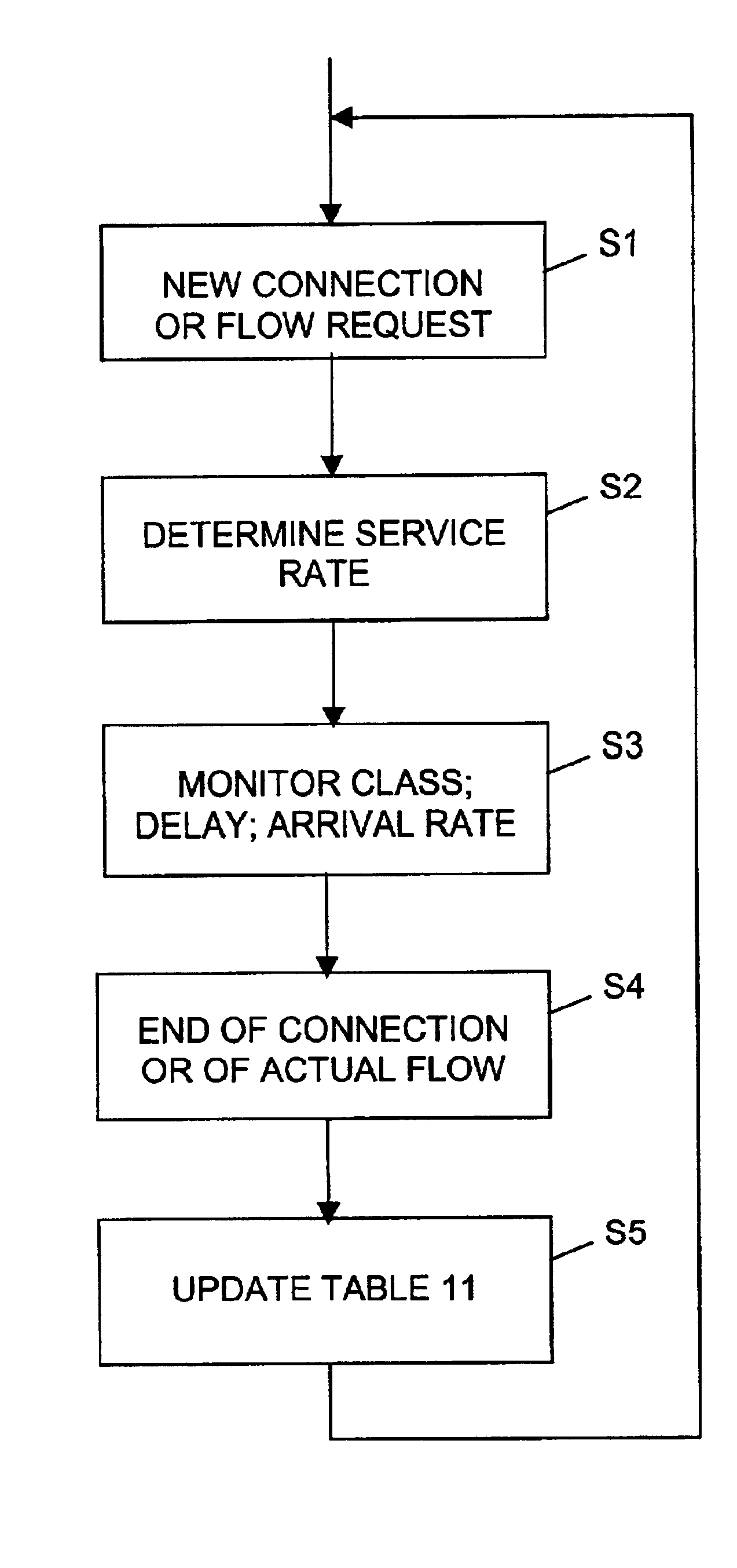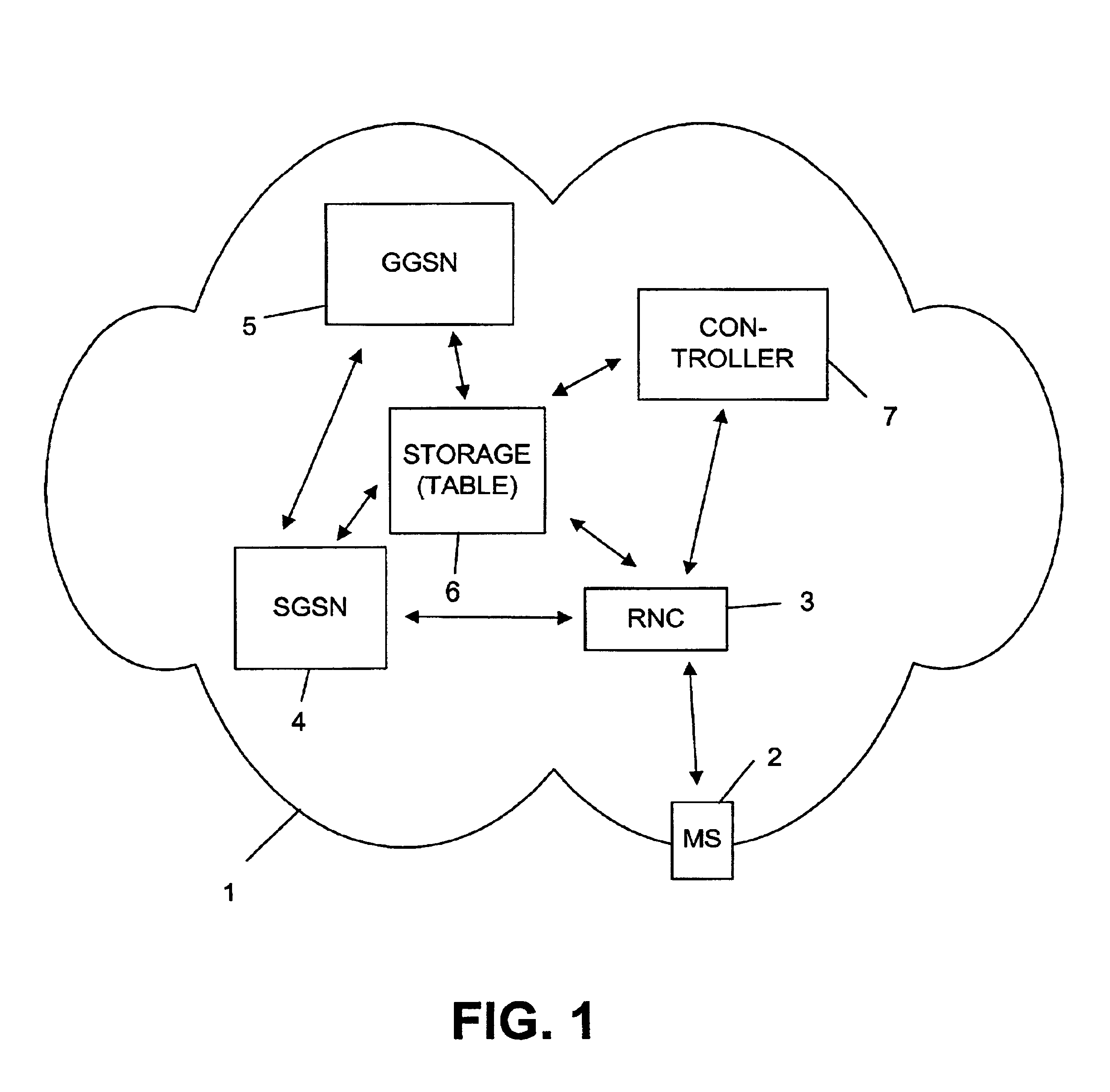Method and system for service rate allocation, traffic learning process, and QoS provisioning measurement of traffic flows
a technology of traffic flow and learning process, applied in the field of telecommunications, can solve the problems of maximum allocation, under-utilization of system resources, deterioration of qos performance of flow, etc., and achieve the effect of improving the provided qos, relative simplicity of the scheme, and increasing or decreasing the amount of resources
- Summary
- Abstract
- Description
- Claims
- Application Information
AI Technical Summary
Benefits of technology
Problems solved by technology
Method used
Image
Examples
Embodiment Construction
[0030]FIG. 1 shows a basic structure of an embodiment of a system in accordance with the invention. The system is implemented in or as a network 1, or forms a part thereof. The network 1 comprises at least one, or a plurality of, user equipments 2 which, in this embodiment, are implemented as mobile stations MS. The user equipments may also be any other type of equipments such as stationary terminals. Although only one user equipment 2 is shown, usually several user equipments are attached to the network 1 and represent connection originating or terminating equipments.
[0031]In case of connection, or connection set-up, with another equipment forming part of network 1 or of another network, a radio connection to user equipment 2 is provided and handled by a radio access network (RAN). The RAN comprises, in this embodiment, a radio network controller (RNC) 3 which is part of, or represents, the radio access network for radio connection to user equipment 2. Usually, several radio access...
PUM
 Login to View More
Login to View More Abstract
Description
Claims
Application Information
 Login to View More
Login to View More - R&D
- Intellectual Property
- Life Sciences
- Materials
- Tech Scout
- Unparalleled Data Quality
- Higher Quality Content
- 60% Fewer Hallucinations
Browse by: Latest US Patents, China's latest patents, Technical Efficacy Thesaurus, Application Domain, Technology Topic, Popular Technical Reports.
© 2025 PatSnap. All rights reserved.Legal|Privacy policy|Modern Slavery Act Transparency Statement|Sitemap|About US| Contact US: help@patsnap.com



